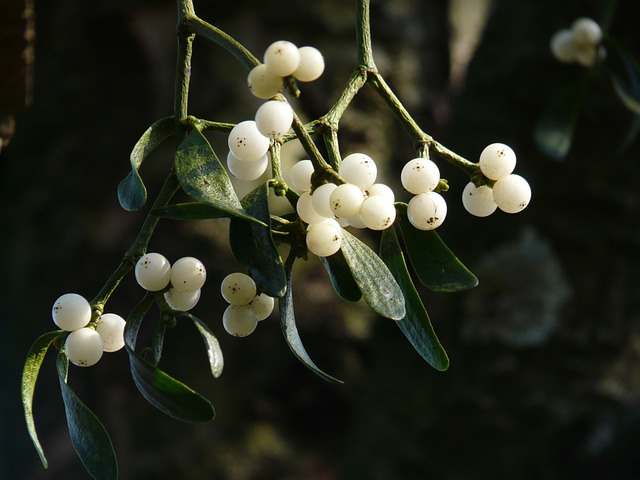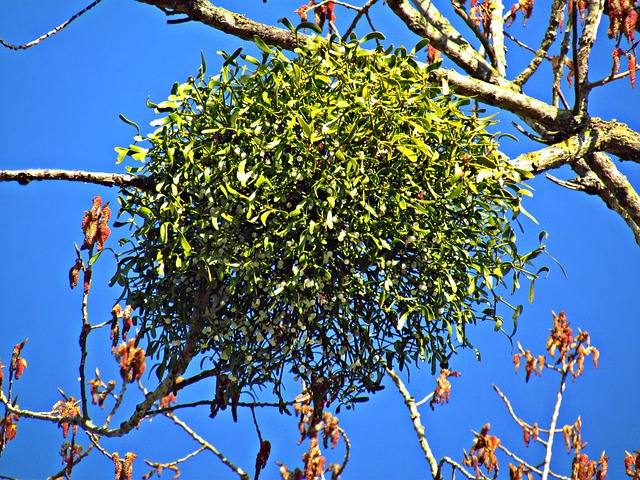Mistletoe as an Adjunctive Cancer Treatment

Mistletoe injections have long been a controversial cancer therapy. For treatment, there are two main forms of mistletoe extract available, fermented mistletoe extract and non-fermented mistletoe extract. Both injections have been studied for the treatment of a number of different types of cancer.
Typically, mistletoe is an adjunctive treatment, meaning that it is administered along with other cancer therapies. Generally, it is not used as a standalone treatment.
Mistletoe’s Mechanism of Action
While it has been used as a cancer therapy since the 1920s, most of the studies have been done in Germany. As a treatment, mistletoe appears to have immune-modulating activities. Studies show that injections of mistletoe increase immune cell numbers (Huber 2005). In addition, injections have also been found to stimulate the body’s natural killer cells and T-helper cells, along with activating other aspects of immune function (Beuth 1992, Yoon 2001). This increased activation is likely part of its benefits for helping to treat cancer.
Beyond immune-stimulating effects, mistletoe also appears to have anti-inflammatory activity. These anti-inflammatory effects are thought to be how mistletoe reduces the side effects of standard cancer treatment, while improving quality of life (Bock 2014, Hegde 2011).
The Research on Mistletoe and Cancer
A number of meta-analyses have been published in an attempt to evaluate all of the research into mistletoe as a cancer treatment. One of the biggest criticisms of the studies available is that many weren’t randomized; the doctors decided which patients received treatment. These patients were then compared to similar control patients. Non-randomized treatment opens up potential for bias, although with the number of studies available, they shouldn’t be completely dismissed. Even so, additional, randomized, placebo-controlled trials are needed.
Quality of Life
One of the more heavily studied effects of mistletoe in cancer care is the improvement in quality of life. During cancer treatment, patients often suffer numerous side effects. A recent review concluded that mistletoe injections provided a meaningful improvement in the quality of life for cancer patients (Loef 2020). A similar study also found significant improvements in cancer-related fatigue (Pelzer 2022). In both studies, the effect size was moderate, suggesting a fairly robust improvement with mistletoe treatments.
Improved Survival
As for improved survival, most studies also appear to show benefits. A meta-analysis of fermented mistletoe injections found an overall 41% improvement in survival times (Ostermann 2020). However, different cancers had different benefits, with cervical cancer responding with a 57% increased survival time and lung cancer responding with just 16%. As for non-fermented mistletoe, the effect size on survival time on average was smaller, just 19% (Loef 2022). For non-fermented mistletoe, there were fewer studies and the authors again raised concerns for potential bias.
Of the published analyses, most have found positive effects. However, one recent analysis concluded that mistletoe is ineffective (Freuding 2019). The analysis claimed a number of the reviewed studies showed no benefits by throwing out all the cancer patients that had been selected for treatment (non-randomized). Since the majority of patients were non-randomized patients, the findings were reduced to being non-significant. While these studies have potential bias, claiming that they showed no benefits is misleading at best. In the analysis, many of the studies they claimed found no survival benefits clearly did when you include all the study participants.
Safety of Mistletoe

While generally considered safe, mistletoe injections aren’t without side effects (Melzer 2009, Schnell-Indurst 2022). There are common injection site reactions of low-to-moderate severity in around a quarter of recipients. Mild-to-moderate, whole-body reactions, including fever, occur in around 2% of treated patients.
For treatment, European mistletoe (Viscum album) is what has been used. American mistletoe (Phoradendron serotinum) is not utilized for treatment. As an herb, mistletoe can be somewhat toxic and should only be used under a doctor’s supervision.
Conclusion
Mistletoe injections, from the data available, appear to be a reasonable adjunctive cancer therapy. As a treatment, they may help reduce side effects of conventional cancer care along with increasing overall survival. Additional research using double-blind, placebo-controlled studies could help to understand the full range of benefits. Since most of the clinical trials published have potential for bias, additional research is warranted to fully verify mistletoes’s effects in cancer treatment.



